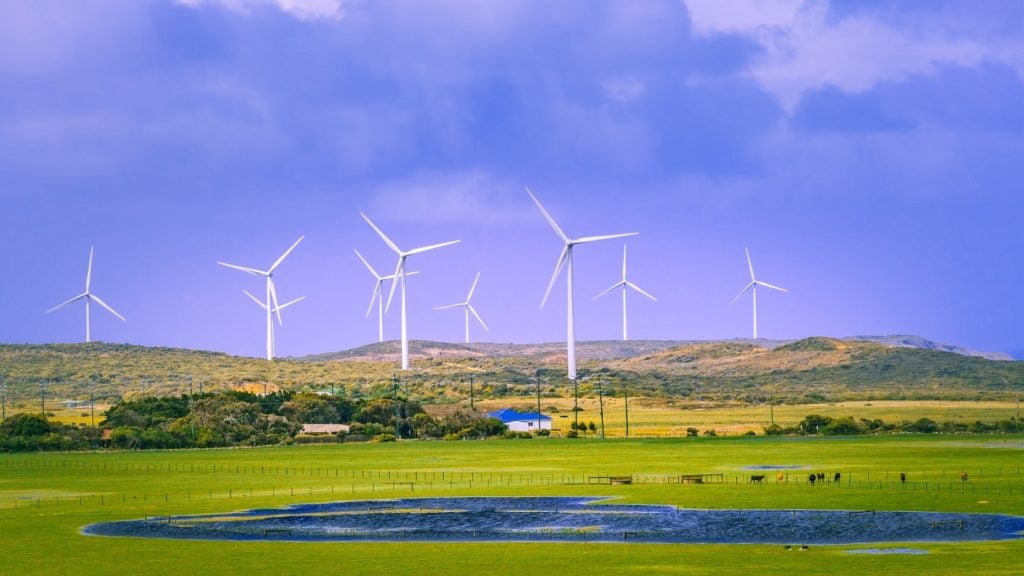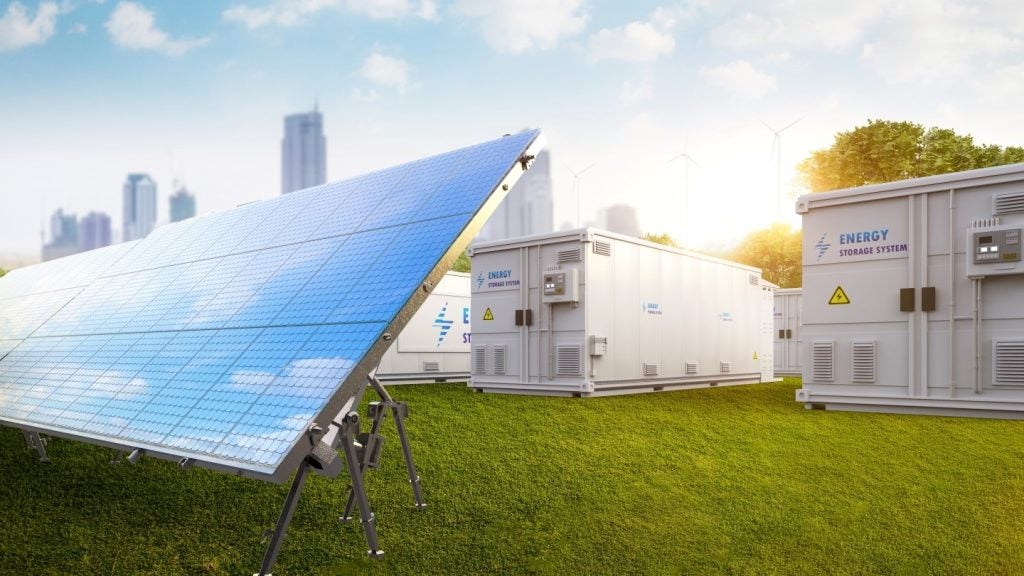
Resource-rich Australia is fast attracting renewable energy firms and is proving a popular base for research institutions. The country’s wind, solar, water and land resources provide it with an excellent base to develop its renewable energy industry. Its leading role in the export of coal has also led it to become a world leader in clean coal technologies. Thin-film solar cells, hybrid solar-wind-diesel remote area power supply systems and wave energy systems are just some of the technologies developed to date.
The global market for clean and renewable energy is likely to be worth A$750bn (£367bn) a year by 2016, according to the 2007 Ernst & Young Renewable Energy Country Attractiveness Indices. The current growth rate of 20–30% is encouraging companies to look for locations around the world for reliable and sustainable global energy markets to support growth strategies.
Prime Minister Kevin Rudd’s government has stated that it will introduce measures to mitigate climate change and CO2 emissions from both the demand and supply side. Key to this strategy is the establishment of market-based incentives to reduce greenhouse gases through an emissions trading scheme. There are also demand-side management measures, assistance for households to cut carbon emissions and efforts on the supply side for the development of zero- and low-emission technologies through a National Clean Coal initiative and a Renewable Energy Fund.
In addition, there are plans to expand the Mandatory Renewable Energy Target to ensure that 20% of power generation is from renewable energy sources by 2020. These initiatives are aimed at providing market conditions to attract companies to the Australian market. Meanwhile, a global marketing effort is underway.
In Australia, the clean energy industry accounts for £2.8bn in annual sales, over £196m in exports and the direct employment of over 20 000 people. Since being appointed in November 2007, the Australian Government has signed the Kyoto Protocol on capping greenhouse gas and set a target to cut the country’s greenhouse gas emissions by 60% of 2000 levels by 2050. A review is currently underway to help establish a carbon trading system and to set green house gas emission targets for 2020. ..
See Also:
Alongside this, A$150m has been set aside to support R&D – funds open to either individual or collaborative firms piloting renewable technology. The government has also been active in driving developments to introduce low- or zero-emission energy from traditional fuels and in the areas of clean coal and carbon capture and storage and attracting international investment.
How well do you really know your competitors?
Access the most comprehensive Company Profiles on the market, powered by GlobalData. Save hours of research. Gain competitive edge.

Thank you!
Your download email will arrive shortly
Not ready to buy yet? Download a free sample
We are confident about the unique quality of our Company Profiles. However, we want you to make the most beneficial decision for your business, so we offer a free sample that you can download by submitting the below form
By GlobalDataCapitalising on clean coal
Australia is the largest exporter of coal and the fourth largest producer behind China, the US and India. With trade in coal worth £10.7bn in 2006-07, the challenge looking forward is to seek out innovative opportunities to use coal more efficiently and reduce greenhouse gas emissions.
The key to this is the deployment of low-emission technologies, encouraged through the government’s direct support to the industry for research and development, or working with the research community on the commercial deployment of several other priority technologies.
Included in the government’s list of priorities is the development of post-combustion capture or oxy-fuel technologies for retrofitting into existing power stations or incorporating into new power stations to capture CO2 emissions. In addition, it wants to focus on technologies to dewater or to dry high-moisture brown coal and those that produce ‘ultra clean coal’ that can be directly consumed in combined cycle plants.
About one third of all green house gas emissions are the result of coal-fired electricity generation and to tackle this area the government has established a A$500m National Clean Coal Fund.
This will finance a set of specific projects to map, test and build carbon storage sites across the country. Projects include A$50m towards a National Carbon Mapping and Infrastructure Plan and A$75m for a national research plan as well as specific allocations for post combustion capture and gasification plants across Australia.
Looking into the sun
The country’s abundant sunshine makes it ideally suited to capitalise on the sun’s natural resource. Professor Martin Green, winner of the Alternative Nobel Prize 2002, and Professor Stuart Wenham at the University of New South Wales’ School of Photovoltaic and Renewable Energy pioneered the development of PV cells that were far more cost-effective than their predecessors.
Their cells were used to power the Olympic Village at the Sydney 2000 games, and most PV cells now produced in Europe are based on the Green principle. In addition, the SLIVER cell, which dramatically reduces the amount of silicon used by 90% compared to conventional solar PV modules, has also come out of Australia.
This revolutionary award-winning technology is being commercialised by Origin Energy, from research done at the Australian National University’s Centre for Sustainable Energy Systems. Complementing the award is a $2m grant from the Structural Adjustment Fund for South Australia to support the purchase of capital equipment that will enable limited commercial manufacturing in the future from the company’s Regency Park R&D pilot facility.
The technology is claimed to exhibit improved tolerance to partial shade and low silicon use without losing performance, and employs mono-crystalline, high-performance silicon proven over 30 years of reliable service.
Australia-based Dyesol has developed technology based on emerging Dye Solar Cell (DSC) technology. DSC involves a two stage sunlight-to-energy conversion process in which special dyes mimic photosynthesis and create a stream of electrons within the medium.
Following an in-depth assessment, Corus, Europe’s second-largest steel producer, and Dyesol have agreed to develop DSC technology with the aim of providing the most cost-effective solution to Corus’s market demand for metal-based PV construction products. The Welsh Assembly has agreed to provide significant funding to further progress the development of DSC technology on steel. Corus and Dyesol have been working closely for the past two years, and in January successfully completed a detailed 12-month study, which confirmed the feasibility of this technology.
Other developments in the solar field include the construction of Solar Systems’ £200m 154MW heliostat solar concentrator power station in northern Victoria. Solar Systems was awarded a A$32m grant by the Australian Government as well as a A$25m grant by the Government of Victoria.
The state is also part-funding a Solar Systems project in South Australia, providing A$3.55m for the Coober Pedy project under its Renewable Remote Power Generation Programme with the South Australian Government chipping in a further A$635 000.
Buoyed-up industry
Australia’s waves are more than just a bonus for beach enthusiasts. Wave energy from the country’s lengthy coastlines can also be used for electricity generation and water desalination.
Australia’s Oceanlinx is already demonstrating its patented oscillating water column technology in a full-scale wave plant that was installed at Port Kembla in New South Wales over two years ago. The company has signed a Power Release Agreement with the Australian utility Integral Energy and expects to be the first wave energy company to be connected to the commercial grid. Oceanlinx is now proposing a 27MW wave energy facility near Portland in Victoria. Development is expected to take place towards the end of 2008.
While most wave systems sit on the water’s surface, Oceanlinx’s CETO system collects energy from rows of buoys tethered to the sea bed. As the buoys sway, they pump high-pressure water to shore where it can be used either to produce freshwater or to drive turbines.
Because Ceto sends water – not electricity, as other systems do – it can also be used for desalination. A 300-unit Ceto wave farm could produce 50MWe, or, if deployed fully for desalination instead of power, 50 billion litres of drinking water a year, or about 10% of the annual needs of metropolitan Sydney.
The Federal Government has invested A$775 000 in the technology and site selection is already under way. Commercial levels of production are expected within three years.
Finding the funds
Australia’s renewable energy industry can make the most of a range of financing options. Several groups have established portfolios of renewable energy assets, becoming experts in the location, investigation and development of renewable power projects. A large number of major infrastructure companies are also showing an interest in setting up renewable energy businesses within their commercial models.
Government funding may be available for some projects, particularly those for demonstration or pilot plants. Such funding usually requires matching or greater funding from other sources. The scale of these grants can extend from a few hundred thousand to several million Australian dollars.
Grants can come either from one of the Australian Government funds set up for this purpose, or from State governments if they are seen to benefit the local community, for example by generating employment. In addition, Australia offers a politically stable and strong economic base for overseas companies that intend to tackle the Asia-Pacific markets, making it an attractive base for firms the world over.
A version of this article first appeared in our sister publication Modern Power Systems.







